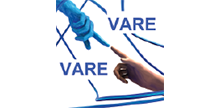Virtual reality application for presurgical support in urology
- abcPoznan University of Technology, Chair of Management and Production Engineering
- d Poznan University of Medical Science, Chair of Urology
Cite as
M. Zukowska, F. Gorski, P. Bun, G. Brominski (2018). Virtual reality application for presurgical support in urology. Proceedings of the 4th International Conference of The Virtual And Augmented Reality In Education (VARE 2018), pp. 183-187. DOI: https://doi.org/10.46354/i3m.2018.vare.027
Abstract
The paper presents results of tests on applying Virtual Reality in presurgical planning in procedure of partial nephrectomy (removing a tumor while leaving the rest of the kidney). The aim of studies was acquainted surgeon to the virtual anatomical model of patient’s kidney with a tumor and also familiarized doctors with relation between parts of the organ (blood vessels, body of kidney (kidney cortex) and tumor). For better support, application included manual adjustment of transparency and option of separation selected part. Surgeon could scope the organ out, look inside of kidney and estimate chances for partial nephrectomy, plan the procedure and learn about patient’s individual anatomy of the organ. The main issue in this studies is presurgicaly support which until now based on medical imaging and diagnostics. Virtual Reality and Augumented Reality created a completely new view at preparing before operations.
References
- S. De Buck, J.R. Rangarajan, Virtual and augmented reality in medical applications. Available from: https://www.esat.kuleuven.be /psi/research/virtualand-augmented-reality-in-medical-applications,
[accessed 10 July 2017] - A. Garcia-Palacios, H. Hoffman A.Carlinc T.A. Furness III C.Botella, September 2002, Virtual reality in the treatment of spider phobia: a controlled study, Behaviour Research and Therapy, Volume 40, Issue 9, Pages 983-993
- C. Botella R. M. Baños C. Perpiñá H. Villa M. Alcañiz A. Rey, February 1998, Virtual reality treatment of claustrophobia: a case report, Behaviour Research and Therapy, Volume 36, Issue 2, Pages 239-246
- C. H. Martinez, V. Chalasani, B. Knudsen, S. E. Pautler, 2009, Virtual reality may improve training of renal surgeons, SPIENewsroom
- P. Stajno, 2013, Chirurgiczne leczenie ograniczonego raka nerki, "Przegląd Urologiczny", nr 2013/3 (79)
- Partial Nephrectomy, Available from: https://www.hopkinsmedicine.org/healthlibrary/tes t_procedures/urology/_22,PartialNephrectomy, [accessed 10 July 2017]
- K. Gonera, J. Kurzac, M. Rusińska, B. Dybała, 2010, Metody CAx w aplikacjach medycznych przy wytwarzaniu technologiami generatywnymi, "Mechanik", Nr 2 (83), str. 132.
- Bun P., Gorski F., Grajewski D., Wichniarek R., Zawadzki P., Low – Cost Devices Used in Virtual Reality Exposure Therapy, Procedia Computer Science 104, 2017, pp 445-451
- Bell, J. T., & Fogler, H. S. (1995). The Investigation and Application of Virtual Reality as an Educational Tool. Proceedings of the American Society for Engineering Education 1995 Annual Conference. Retrieved from https://vrupl.evl.uic.edu/vrichel/Papers/aseepap2.pdf
- Bowman, D. A., & McMahan, R. P. (2007). Virtual Reality: How Much Immersion Is Enough? Computer, 40(7), 36-43. doi:10.1109/MC.2007.257
- Escobar-Castillejos, D., Noguez, J., Neri, L., Magana, A., & Benes, B. (2016). A Review of Simulators with Haptic Devices for Medical Training. Journal of Medical Systems, 40(4), 104. doi:10.1007/s10916-016-0459-8
- Getchell, K., Miller, A., Nicoll, J. R., Sweetman, R. J., & Allison, C. (2010). Games Methodologies and Immersive Environments for Virtual Fieldwork. IEEE Transactions on Learning Technologies, 3(4), 281-293. doi:10.1109/TLT.2010.25
- Glatter, R. (2015). How Virtual Reality May Change Medical Education And Save Lives. Retrieved from: http://www.forbes.com/sites/robertglatter/2015/0 5/22/how-virtual-reality-may-change-medicaleducation-and-save-lives
- Gorski F., Bun P., Wichniarek R., Zawadzki P., Hamrol A., 2017., Effective Design of Educational Virtual Reality Applications for Medicine using Knowledge-Engineering Techniques, EURASIA Journal of Mathematics, Science and Technology Education, 13 (2), 395-416.
- Hamrol, A., Górski, F., Grajewski, D., & Zawadzki P. (2013). Virtual 3D atlas of a human body - development of an educational medical software application, Procedia Computer Science, 25, 302-314. doi:10.1016/j.procs.2013.11.036
- Vankipuram, A., Khanal, P., Ashby, A., Vankipuram, M., Gupta, A., Drumm Gurnee, D. Smith, (2014). Design and Development of a Virtual Reality Simulator for Advanced Cardiac Life Support Training. Journal of Biomedical and Health Informatics, IEEE, 18(4), 1478-1484. doi:10.1109/JBHI.2013.2285102
- Żukowska M., Górski F. Bromiński G., Rapid Manufacturing and Virtual Prototyping of Presurgery Aids, IFMBE, volume 68/3, pp. 399-403
